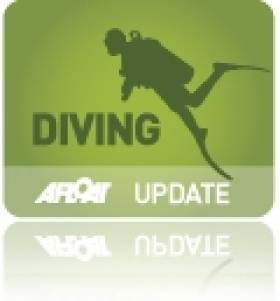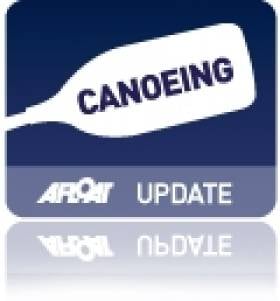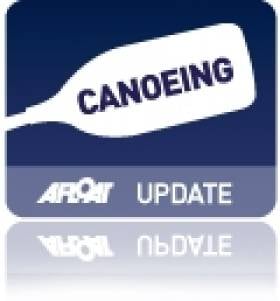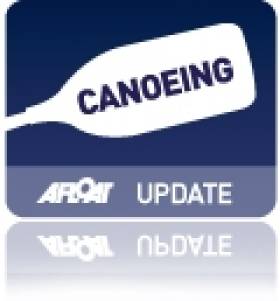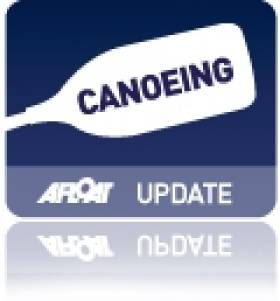Displaying items by tag: canoeing
#RNLI - Portaferry RNLI's volunteer lifeboat crew were involved in the rescue of 23 canoeists who got into difficulty just off Castle Island in Strangford Lough yesterday afternoon (Saturday 17 May).
The call for help was received at 2.40pm and the volunteer lifeboat crew launched at 2.45pm.
They arrived at the scene just off Castle Island in Strangford Lough in Co Down 10 minutes later, finding six of the party of canoeists in the water.
Weather conditions at the time were cloudy with good visibility, with a slight sea swell and a Force 4 southerly wind.
The RNLI crew recovered two of the people from the water, while a small motor boat which had also come to the canoeists' aid took the other four on board.
The RNLI lifeboat crew then took their two casualties along with two canoes back to nearby Strangford Lough Yacht Club, where the casualties were put ashore into the care of HM Coastguard.
- lifeboat crew then returned to the scene near Castle Island and from there escorted the remaining 17 members of the canoe party back to the safety of the yacht club.
Commenting on the rescue, Portaferry RNLI lifeboat operations manager Brian Bailie said: "Thankfully everyone was brought safely to shore and it is testament to the training and dedication of the volunteer RNLI crew that a potentially tragic situation was averted.
"Strangford Lough is an extremely popular location for groups of canoeists and it is vital that they take all necessary precautions when taking to the water."
Canoeing Clubs In Battle For Club Championships This April
#Canoeing - Experienced canoeing and kayaking enthusiasts from across Dublin city and county are bound for Kilkenny and the south east as the countdown has begun to the country’s first ever Canoeing Ireland Club Championships.
Over 400 competitors from 19 clubs across the country, among them athletes from the Wildwater Aqua Canoe Club in Lucan/Chapelizod, Lir Canoe Club, Rockhoppers and the UCD Canoe Club, have already registered for the two-day white-knuckle, adrenaline-pumping contest that will draw Ireland’s top watersports enthusiasts to Kilkenny city, to nearby Graiguenamanagh and Tramore in Waterford on 12-13 April.
A series of training weekends began on Saturday 1 February and as many as 80 competitors will be in the region every weekend up to the Club Championships, preparing for the all-island event.
The Canoeing Ireland Club Championships 2014 is also set to be a major revenue spinner for both Kilkenny and Waterford, and an amazing showcase event with hundreds more supporters, family members and friends expected to flock to the region for the inter-clubs competition.
The ultimate club will be crowned based on its athlete’s cumulated performances across all of the eight disciplines, which include a canoe slalom and wildwater racing in Clashganny; sprint kayaking and freestyle kayaking in Kilkenny city; and kayak surfing in Tramore.
The venue for the ultimate challenge, the White Water Kayak Race, will be confirmed closer to the event as weather will play a major role in finding the most testing waters for the spectacular event.
This will be an epic weekend not to be missed, according to Canoeing Ireland development officer Benny Cullen.
“Kilkenny was chosen due to its central location, its large variety of rivers in close vicinity to the city and its welcoming atmosphere,” he said.
“Organisations such as Kilkenny Recreation and Sports Partnership and Kilkenny Leader Partnership have done trojan work in the region to promote the sport, improve facilities and get more people active and out on the rivers.
“We are very grateful to all our supporters, particularly Great Outdoors, for their generous sponsorship.”
Cullen added that the championship “will also be a great spectator weekend and the best views of the events in Kilkenny city will be from the east bank of the Nore in Kilkenny, along Johns Quay between Green Street Bridge and Kilkenny Castle.
“Onlookers and supporters in Graignamanagh will have a bird’s eye view from the canal tow path at Clashganny Lock.”
'Blueway' Snorkel And Canoe Trail Set To Launch This Year
#Diving - A new series of 'free water trails' on the Galway-Mayo coastline where diving novices can get into snorkelling is set to be launched early this year.
TheJournal.ie reported recently on plans for the Blueway, a network of five coastal sites in the West - Boffin Harbour on Inis Boffin, Killary Fjord, Keem on Achill Island, Mannin Bay and the Old Head in Co Mayo - that will provide safe havens for snorkelling and open water canoeing alike.
The concept is the brainchild of Irish Underwater Council sports development officer Laura Taylor, and already has the backing of Fáilte Ireland, the Irish Canoe Union/Canoeing Ireland, the National Trails office and three rural development companies.
It's hoped that the Blueway will make the wonders of Ireland's coastal waters more accessible to those who may be put off by the perceived expense of diving as a hobby.
Snorkelling - which only requires a wetsuit, mask and snorkel, and some easy training available at pools nationwide - provides and easy in to exploring the deep, especially for families.
And it's appeal is part of a push to encourage more would-be coastal explorers to take the plunge in the wake of the 50th anniversary of the Irish Underwater Council (CFT), as previously reported on Afloat.ie.
Young Ireland Canoeists Find Going Tough in Denmark
#CanoeMarathon2013: Ireland’s junior and under-23 competitors struggled at the Canoe Marathon World Championships at Lake Bagsværd in Denmark today. Katrina Broderick finished 18th in the women’s junior K1, while Jack Seery was 33rd and Alexander Broderick 41st in the junior men’s K1.
At under-23 level, Seán McCarthy – in his first year at this level, was well down the field, while David Buggy did not finish.
Peter Egan and Jenny Egan compete in the men’s and women’s K1 tomorrow.
Canoe Marathon World Championships, Lake Bagsværd, Denmark (Irish Interest, Selected Results)
Men, K1 - Junior: 33 J Seery 1:43.10; 41 A Broderick 1:53.55.
Women, K1 - Junior: 18 K Broderick 1:34.31.
Canoeist Banks Comes Close in Copenhagen
#CanoeMarathon2013: Malcolm Banks of Salmon Leap Canoe Club finished fifth in the K1 50 to 54 class at the Canoe Marathon Masters World Cup in Copenhagen in Denmark today. The Irishman got away with the leading group and was just 28 seconds off a medal at the finish. Banks was a Masters world champion in 2008.
Video: Bangor RNLI In Canoe Rescue
#RNLI - The RNLI has posted video to YouTube of the Bangor lifeboat crew's rescue of two canoeists from the water at Belfast Lough last Monday 12 August.
The two paddlers were reported to be suffering from the cold and exhaustion but were taken to safety by the Bangor RNLI volunteers.
Canoeists Heurteau and Rheinisch Both Make Semi-Finals
#CanoeSlalomTacen: Eoin Rheinisch and Ciarán Heurteau both qualified for the semi-finals of the men's K1 at the canoe slalom World Cup at Tacen in Slovenia today. Heurteau clocked an excellent time of 100.02 seconds with no penalties in his second run this afternoon. The French-born Irishman was under pressure as he had not guaranteed qualification with his first run.
Rheinisch did not compete in the second run as his first-run time of 102.21 had proved sufficient to qualify him to tomorrow’s semi-finals.
Hannah Craig did not qualify in the women's K1.
Canoe Slalom World Cup, Tacen, Slovenia – Day One (Irish interest)
Men
K1 – Heats (Top 40 Qualify): 9 C Heurteau 100.02 seconds (2nd run); 25 E Rheinisch 102.21 (1st run); 67 P Hynes 118.28 (2nd run; incl. 6 sec pen)
Women
K1 - Heats (Top 30 Qualify); 37 H Craig 170.88 (2nd run; incl 52 sec pen)
Canoeing Students Paddle The Shannon For Charity
#Canoeing - The Longford Leader reports on a recent canoeing adventure by four college students along the River Shannon to fundraise for the Irish Cancer Society.
The four set off from the Shannon Pot in Co Cavan, giving themselves 10 days to reach the Shannon Estuary at Limerick - more than 250km away.
And amazingly, they completed the challenge with two days to spare!
The Longford Leader has much more in the story HERE.
Heurteau Sole Irish Qualifier at Augsburg World Cup
# CANOE SLALOM WORLD CUP: Ciaran Heurteau was Ireland’s sole qualifier for the semi-finals on the first day of the canoe slalom World Cup in Augsburg, Germany. Heurteau, who has an Irish mother but was brought up near Paris, secured his place with his first run, and finished 23rd of the 40 qualifiers on a difficult course. Eoin Rheinisch placed 49th, missing a semi-final for the second successive World Cup. He also missed out in Cardiff.
Liam Jegou, who is just 17, did well but was disappointed with placing 44th in the men’s C1. Hannah Craig fell ill and did not compete in the women’s K1.
Canoe Slalom World Cup, Augsburg, Germany, Day One (Irish interest)
Men
K1 – Heats (First 40 Qualify for Semi-Finals): 1 Slovenia (P Kauzer) 98.22 secs; 23 C Heurteau 104.42 (incl 2 sec pen; 1st run); 49 E Rheinisch 107.52 (2nd run); 61 P Hynes 114.76 (2nd Run);
C1 – Heats (First 20 Qualify): 44 L Jegou 118.32 (incl 4 sec pen; 2nd run).
Women
K1 – Heats: H Craig did not start.
# EURO CANOE SPRINT: On his first outing at the European Canoe Sprint Championships in Portugal, Ireland’s Andrzej Jezierski finished second in his heat of the C1 200, just eight hundredths of a second off the top spot. Jezierski goes directly through to tomorrow's A Final.
Barry Watkins finished eighth in the A Final of the K1 1000.
European Canoe Sprint Championships (Irish interest)
Men
K1 1000 – A Final: 8 B Watkins 3:33.420.
C1 200 – Heat One: 2 A Jezierski 41.594
Women
K1 200 – Heat One: J Egan 47.429




























